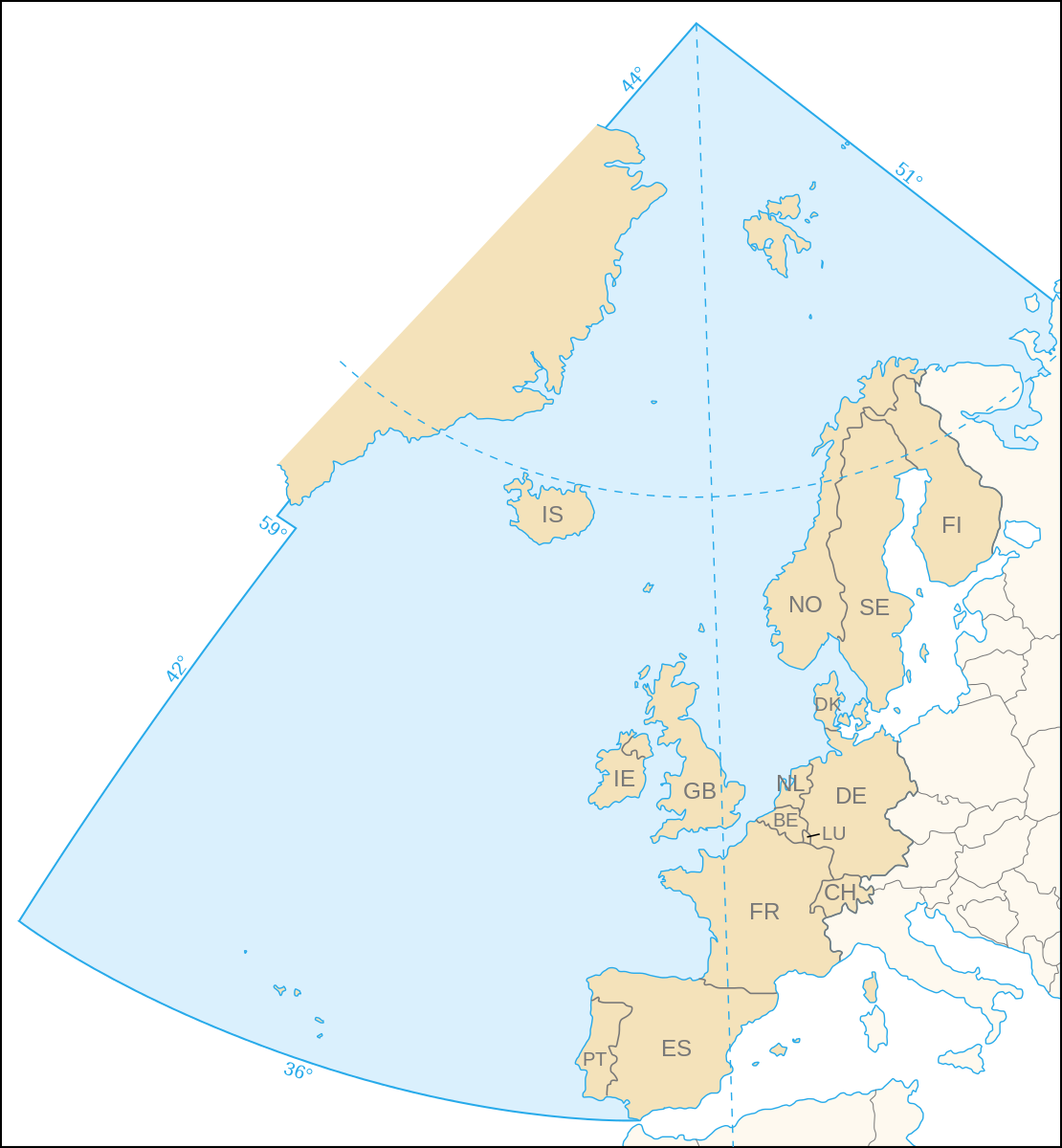OSPAR Convention
The OSPAR Convention is the current legal instrument guiding international cooperation on the protection of the marine environment of the North-East Atlantic.
OSPAR started in 1972 with the Oslo Convention against dumping and was broadened to cover land-based sources of marine pollution and the offshore industry by the Paris Convention of 1974. These two conventions were unified, up-dated and extended by the 1992 OSPAR Convention. The new annex on biodiversity and ecosystems was adopted in 1998 to cover non-polluting human activities that can adversely affect the sea.
The fifteen Governments are Belgium, Denmark, Finland, France, Germany, Iceland, Ireland, Luxembourg, The Netherlands, Norway, Portugal, Spain, Sweden, Switzerland and United Kingdom.
Work under the Convention is managed by the OSPAR Commission, made up of representatives of the Governments of 15 Contracting Parties and the European Commission, representing the European Union. While Finland is not on the western coasts of Europe, some of its rivers flow to the Barents Sea, and historically it was involved in the efforts to control the dumping of hazardous waste in the Atlantic and the North Sea. Luxembourg and Switzerland are Contracting Parties due to their location within the catchments of the River Rhine.
Convention
Contained within the OSPAR Convention are a series of Annexes which deal with the following specific areas:
Annex I: Prevention and elimination of pollution from land-based sources;
Annex II: Prevention and elimination of pollution by dumping or incineration;
Annex III: Prevention and elimination of pollution from offshore sources;
Annex IV: Assessment of the quality of the marine environment;
Annex V: On the protection and conservation of the ecosystems and biological diversity of the maritime area.
Work to implement the OSPAR Convention and its strategies is taken forward through the adoption of decisions, which are legally binding on the Contracting Parties, recommendations and other agreements.
Work
The OSPAR maritime area encompasses extensive areas in the Wider Atlantic and the Arctic Waters that are beyond the limits of national Exclusive Economic Zones (EEZs). This Area Beyond National Jurisdiction (ABNJ) covers approximately 40% of the OSPAR maritime area. OSPAR has the legal power to designate Marine Protected Areas (MPA) and has agreed to designate them in ABNJ with the aim of achieving an ecologically coherent and well managed network of MPAs.
As of October 2021, OSPAR has designated eleven MPAs on the high seas.
2021
OSPAR approved a new marine protected area in the North Atlantic, the North Atlantic Current and Evlanov Sea basin (NACES) MPA - representing the 11th MPA OSPAR has established on the high seas.
The 600,000 km2 ocean area was found to be a vitally important foraging habitat for seabirds breeding on the coasts of the North Atlantic, and those migrating across the region. The MPA was designated on October 1st, and will come into force 200 days after that date; on the 19th of April, 2022.
The management measures for the region aim to protect seabird populations, as well as to maintain the richness and resilience of the ecosystems upon which they rely. The MPA seeks to minimize or mitigate human activities that pose a threat to seabirds or the surrounding environment, including fisheries, disturbance from vessel traffic, and pollution.
2012
In August 2012, the OSPAR and SSA Secretariats signed a Collaboration Arrangement to “maximize opportunities for the sharing of research, expertise and practical experience in seeking to protect and manage the marine environment of the North Atlantic, particularly in Areas beyond National Jurisdiction.”
Source: OSPAR website.


